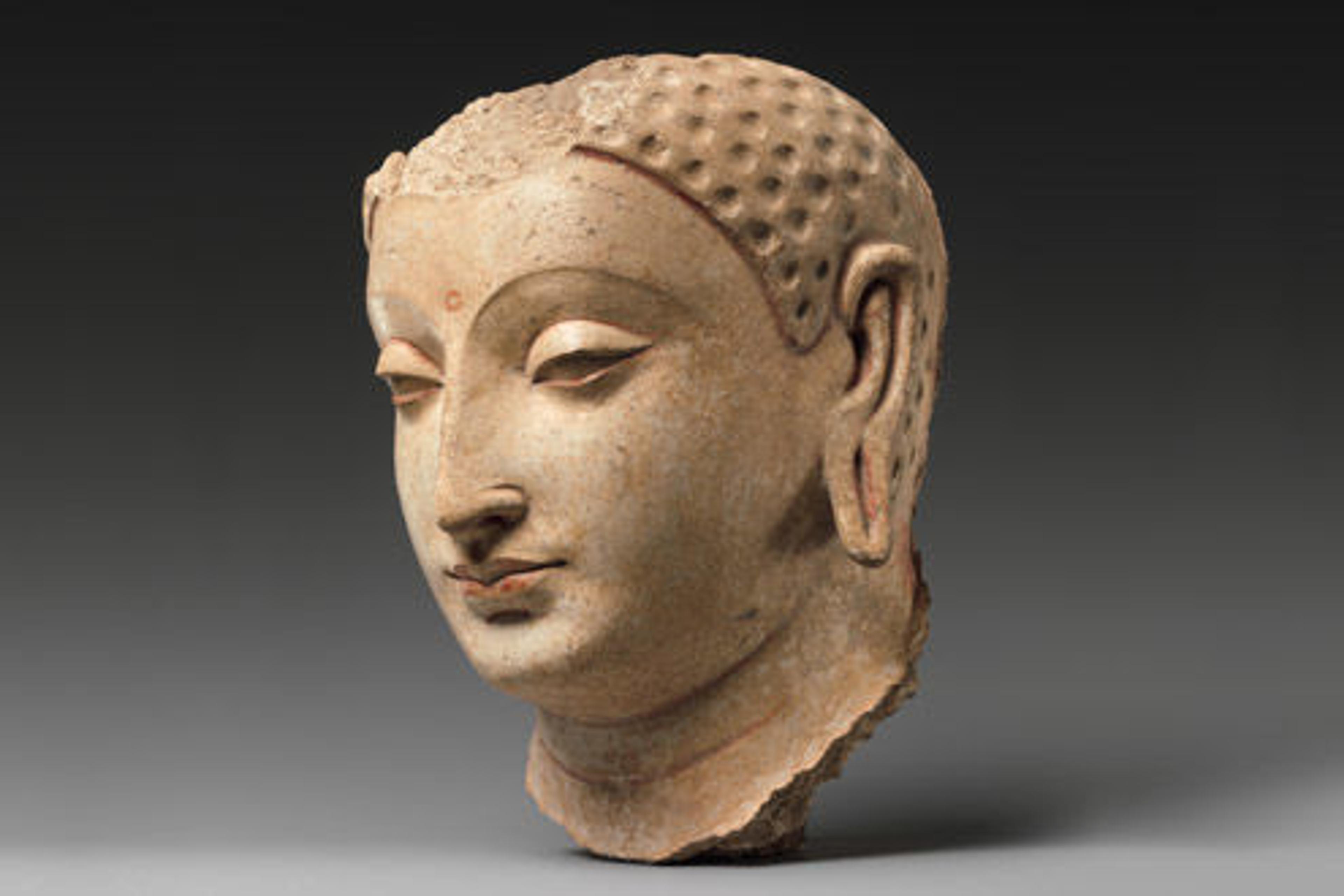Buddhism along the Silk Road

Head of Buddha, 5th–6th century. Afghanistan (probably from Hadda). Stucco with traces of paint; H. 7 1/4 in. (18.4 cm). The Metropolitan Museum of Art, New York, Rogers Fund, 1930 (30.32.5)
«At the end of the fifth century, the great Buddhist centers of Gandhara in Northern Pakistan collapsed in the wake of Hun invasions that swept in from the area north of Afghanistan. The current exhibition Buddhism along the Silk Road: 5th–8th Century (on view through February 10, 2013) focuses on art produced as a result of contact with the dispersed Gandharan Buddhist communities, who were moving into Afghanistan and up into the Western parts of Central Asia.» It was an interesting, complex moment of religious and artistic exchange, as the Hun invaders not only took control of Gandhara and Kashmir, but also plunged down into the plains of North India. Artistic forms from the North Indian Gupta Buddhist centers came to affect the art of Kashmir, Gandhara, and, to an extent, even that of Afghanistan. Nomadic people, who were both prosperous and militarily powerful, also played an important role within Central Asia.
To trace the connections discussed in the exhibition, my colleagues from the Department of Digital Media have created a short animation that provides geographical and chronological context for the forty sculptures and seventy small gold objects on display.
<object id="brightcove-1684250870001" codebase="http://download.macromedia.com/pub/shockwave/cabs/flash/swflash.cab#version=9,0,47,0" classid="clsid:D27CDB6E-AE6D-11cf-96B8-444553540000" width="595" height="372" getplayheadtime="function () { return eval(instance.CallFunction('<invoke name=\''+name+'\' returntype=\'javascript\'>' + __flash__argumentsToXML(arguments,0) + '</invoke>')); }" akamaianalytics_setdata="function () { return eval(instance.CallFunction('<invoke name=\''+name+'\' returntype=\'javascript\'>' + __flash__argumentsToXML(arguments,0) + '</invoke>')); }"> &lt;div _rdEditor_temp="1"&gt;Please enable flash to view this media. &lt;a href="http://get.adobe.com/flashplayer/"&gt;Download the flash player.&lt;/a&gt;&lt;/div&gt;
Please enable flash to view this media. Download the flash player.
Kurt Behrendt
Kurt Behrendt is an associate curator in the Department of Asian Art.